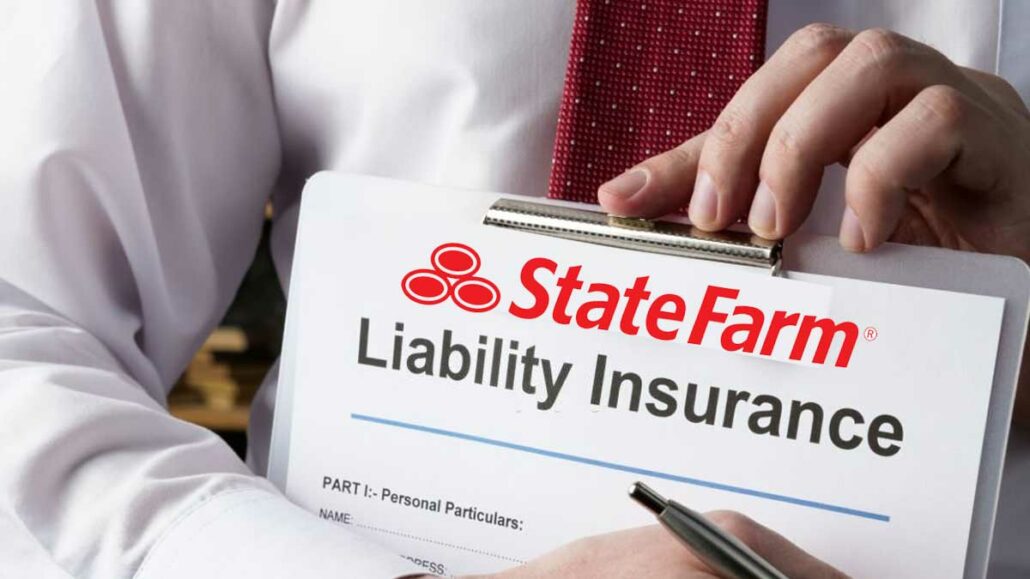When it comes to safeguarding your assets and ensuring financial security, State Farm Liability Insurance stands as a reliable shield. This comprehensive coverage offers a safety net in unpredictable situations, giving you the peace of mind you deserve. In this article, we’ll delve into the intricacies of State Farm Liability Insurance, exploring its benefits, coverage options, and why it’s a crucial investment for individuals and businesses alike.

What is State Farm liability insurance?
State Farm liability insurance is a type of insurance that protects you from financial losses if you are sued for bodily injury or property damage caused by your negligence. It offers a variety of LI policies, including:
- Auto liability insurance: This type of insurance pays for the medical expenses and property damage of others if you are at fault in a car accident.
- Homeowners liability insurance: This type of insurance pays for the medical expenses and property damage of others if you are sued for an accident that occurs on your property.
- Renters liability insurance: This type of insurance pays for the medical expenses and property damage of others if you are sued for an accident that occurs in your rented apartment or home.
- Umbrella liability insurance: This type of insurance provides additional liability coverage beyond what is offered by your other liability insurance policies.
State Farm LI can protect you from a variety of lawsuits, including:
- Car accidents
- Slip-and-fall accidents
- Dog bites
- Product liability lawsuits
- Wrongful death lawsuits
If you are sued for liability, State Farm will pay for your legal defense and any damages that you are awarded to pay, up to the limits of your policy.
It is important to note that liability insurance does not cover intentional acts or criminal acts. It also does not cover damages to your own property.
What does State Farm liability insurance cover?
State Farm liability insurance covers a variety of expenses, including:
- Bodily injury: This includes medical expenses, lost wages, and pain and suffering.
- Property damage: This includes the cost to repair or replace damaged property.
- Legal defense costs: This includes the cost of hiring an attorney to defend you in court.
State Farm LI policies typically have limits on how much they will pay for each type of expense. For example, you might have a limit of $100,000 for bodily injury and $50,000 for property damage.
It is important to note that State Farm LI does not cover all types of lawsuits. For example, it does not cover intentional acts or criminal acts. It also does not cover damages to your own property.
Here are some examples of what State Farm LI might cover:
- If you are at fault in a car accident, your liability insurance will pay for the medical expenses and property damage of the other driver and their passengers.
- If someone slips and falls on your property and is injured, your liability insurance will pay for their medical expenses.
- If your dog bites someone, your liability insurance will pay for their medical expenses.
- If you are sued for product liability because of a product that your company sells, your liability insurance will pay for your legal defense costs and any damages that you are awarded to pay.
- If you are sued for wrongful death because of an accident that you caused, your liability insurance will pay for the damages that are awarded to the family of the deceased.
If you are unsure whether or not a particular type of lawsuit is covered by your State Farm LI policy, you should contact your agent.
How much does State Farm liability insurance cost?
The cost of State Farm liability insurance varies depending on a number of factors, including:
- The type of liability insurance you need (auto, homeowners, renters, umbrella, etc.)
- The amount of coverage you need
- Your driving record
- Your credit score
- Your location
According to NerdWallet, the average cost of State Farm car liability insurance in the United States is $656 per year. The average cost of State Farm homeowners liability insurance is $1,274 per year. And the average cost of State Farm renters LI is $150 per year.
However, it is important to note that these are just averages. Your actual cost of State Farm LI may be higher or lower depending on the factors listed above.
The best way to get an accurate quote on State Farm liability insurance is to contact a State Farm agent. They can assess your individual needs and give you a quote based on your specific situation.
What are the benefits of State Farm liability insurance
Here are many benefits to having State Farm liability insurance. Some of the key benefits include:
- Financial protection: State Farm LI can help you protect your assets from financial losses if you are sued for bodily injury or property damage caused by your negligence.
- Peace of mind: Knowing that you have liability insurance can give you peace of mind, knowing that you are financially protected if the unexpected happens.
- Legal defense: State Farm LI will pay for your legal defense costs if you are sued, even if you are not found to be at fault.
- Broad coverage: State Farm LI covers a wide range of lawsuits, including car accidents, slip-and-fall accidents, dog bites, and product liability lawsuits.
- Affordable rates: It is typically very affordable, especially when you consider the financial protection that it provides.
How to file a State Farm liability insurance claim
To file a State Farm liability insurance claim, you can:
- Call State Farm.
- File a claim online.
- Contact your State Farm agent.
When you file a claim, you will need to provide the following information:
- Your name, address, and phone number
- Your policy number
- The date, time, and location of the incident
- A description of the incident
- The names and contact information of any witnesses
- The names and contact information of any injured parties
- The names and contact information of any property owners whose property was damaged
State Farm will assign a claims adjuster to your case. The claims adjuster will investigate the incident and determine whether or not it is covered by your policy. If the incident is covered, the claims adjuster will work with you to settle your claim.
How to compare State Farm liability insurance quotes
There are a few things you can do to compare State Farm LI quotes:
- Get quotes from multiple insurance companies. This is the best way to ensure that you are getting the best possible rate. You can get quotes online, over the phone, or from an insurance agent.
- Compare the coverage offered by each company. Make sure that you are comparing policies that offer the same amount of coverage. You may also want to compare the different types of coverage that are available.
- Consider the discounts that are offered by each company. Many insurance companies offer discounts for things like bundling policies, having a good driving record, and installing safety features in your car.
- Read the reviews of each company. This can help you get a sense of the company’s reputation and customer service.
How to choose the right State Farm LI for you
To choose the right State Farm liability insurance for you, you need to consider your individual needs and budget. Here are a few things to keep in mind:
- The type of liability insurance you need. State Farm offers a variety of liability insurance policies, including auto, homeowners, renters, and umbrella insurance. Choose the type of insurance that is right for you based on your assets and lifestyle.
- The amount of coverage you need. State Farm liability insurance policies typically have limits on how much they will pay for each type of expense. Choose the amount of coverage that you need based on your risk exposure.
- Your budget. State Farm LI is typically very affordable, but the cost will vary depending on the type of policy you choose, the amount of coverage you need, and your individual risk factors.

